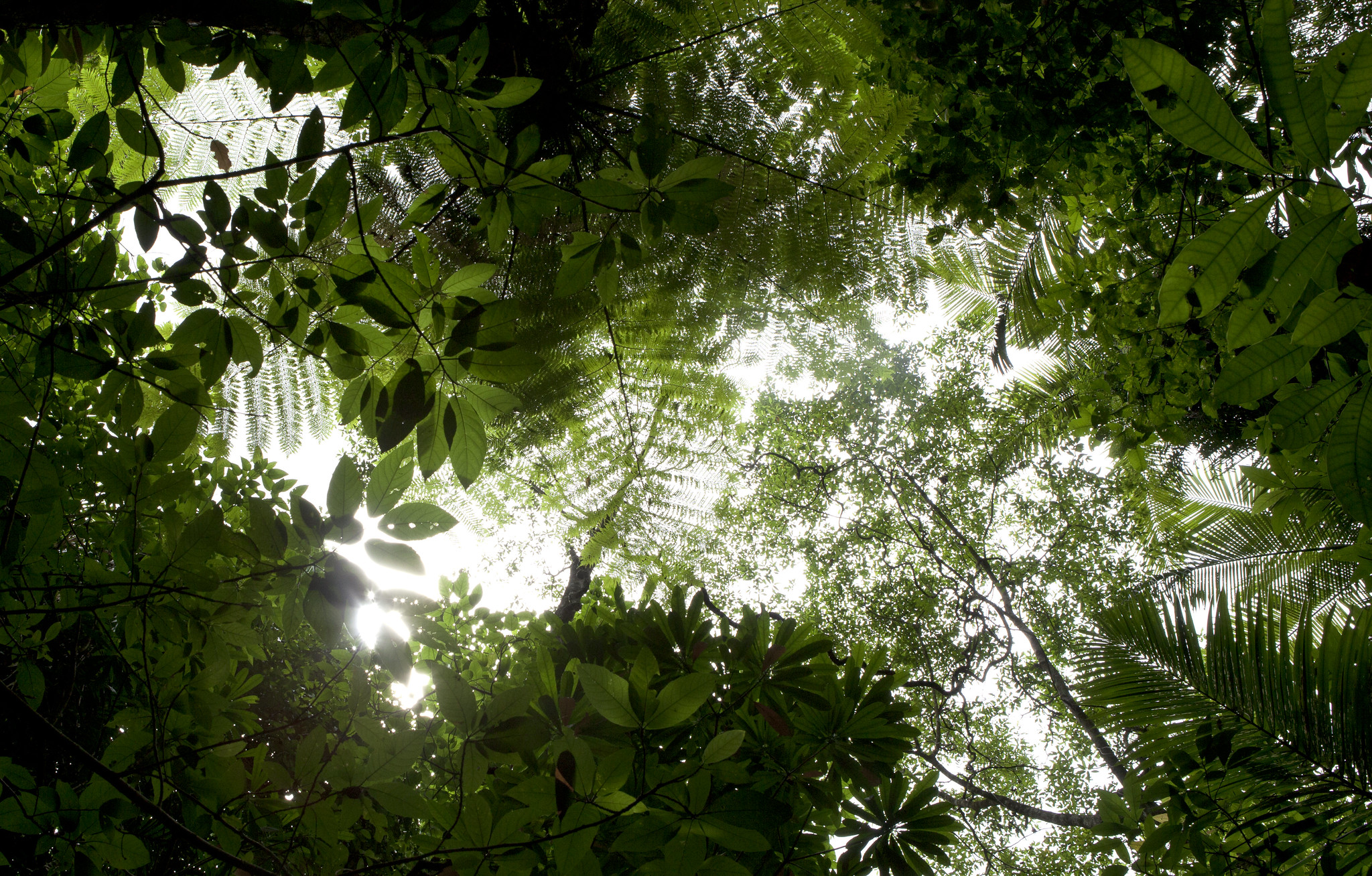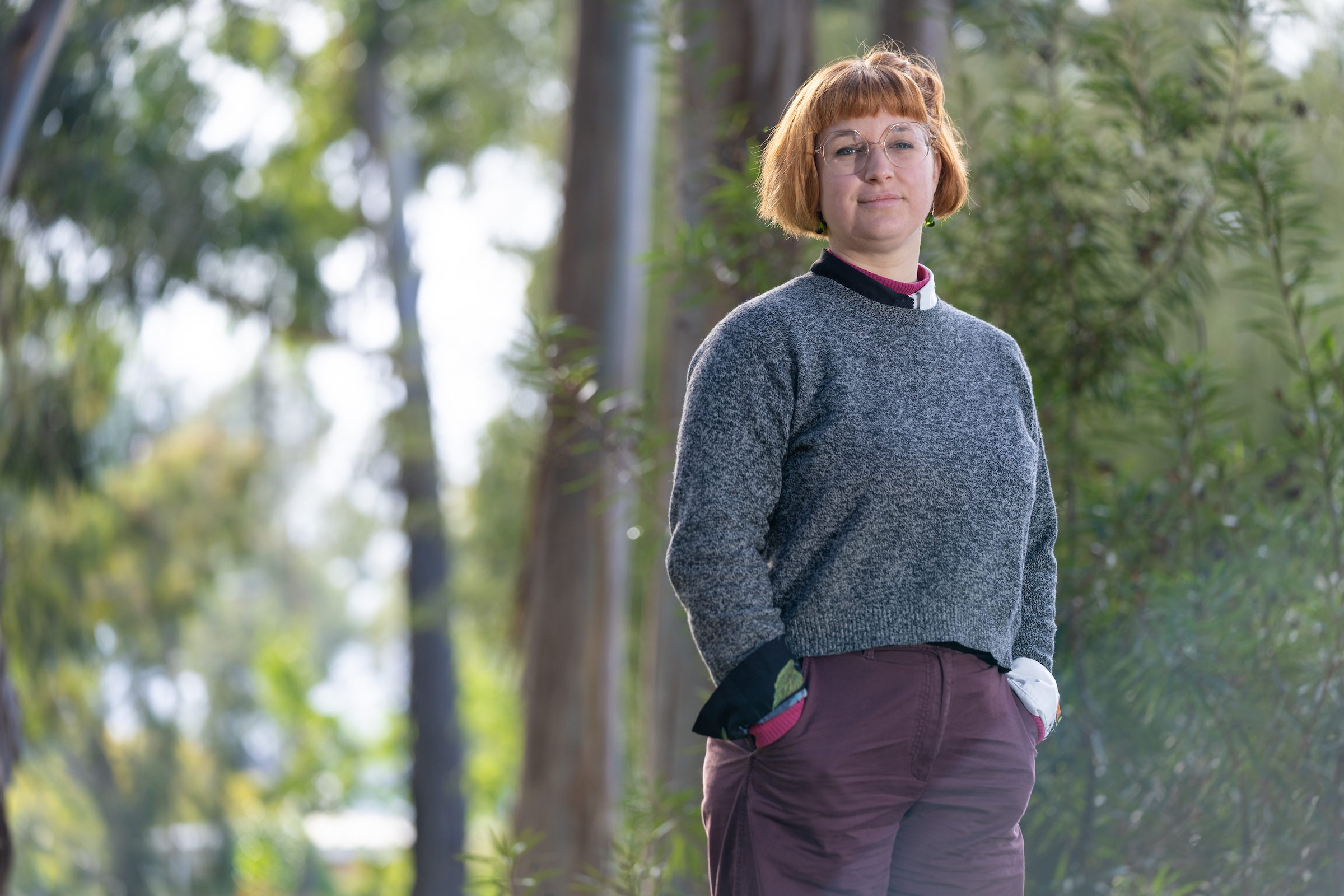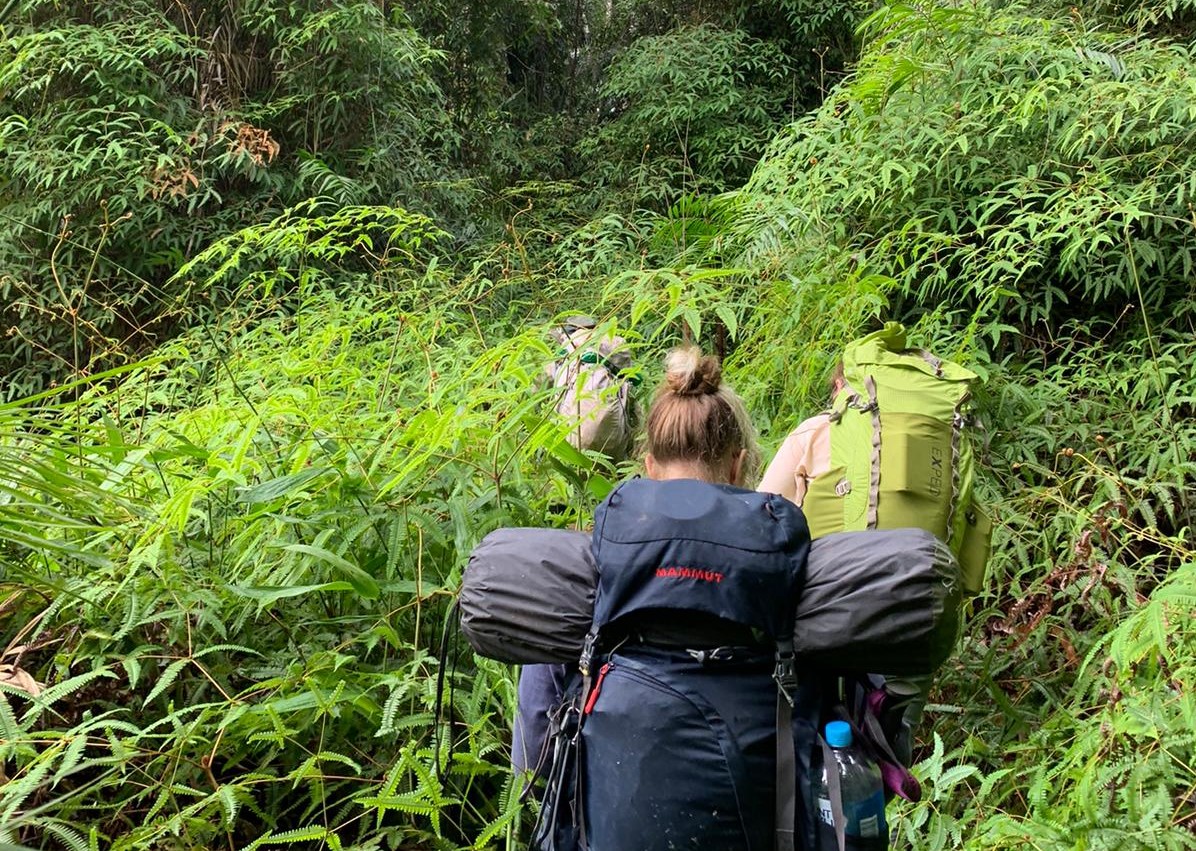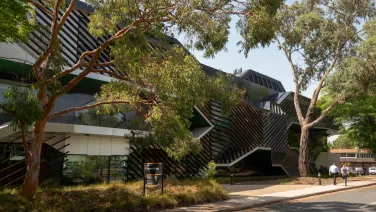
You’d probably hug these trees too, after the epic treasure hunt it takes to find them
From remote sub-Antarctic islands to Bornean jungles, Hannah Carle has experienced some pretty tough environments for scientific field work. But she says nothing was as tough as trekking with a heavy pack through Queensland tropical rainforests to measure old-growth trees.
“Every day was harder than the previous day. Because we’d go somewhere with steeper terrain, and then even steeper terrain and then a longer walk in,” Carle says. “And there were so many leeches.”

The team of around six researchers carried secateurs and brush hooks with them specifically to cut their way through a notoriously spikey plant called ‘lawyer cane’ that grows in this part of the world.
“Because the trail is so well covered, you're often kind of bashing through trees and following GPS coordinates, like a treasure hunt.”
It already sounds like something from another world, before she adds: “And then there are the stinging trees.”
The bark, leaves and stems of stinging trees are all covered in exceptionally fine hairs, like nanofibres, which will fracture into your skin when you touch them and release neurotoxins. The excruciating, throbbing pain it causes has been described “as the worst kind of pain you can imagine.”
“So you're ducking under fallen trees and climbing over brush and cutting lawyer cane and then all of a sudden there's a stinging tree,” Carle explains.
So why endure this apparent nightmare?
All of this is so that the team can check up on 4000 individual trees, about half of a network of trees that have been monitored by scientists since the early 1970s.
Carle’s PhD with the ANU Research School of Biology used this data to examine how forest carbon sinks change over time, especially in response to a changing climate. That is, how the balance of tree growth to tree mortality changes through time, and how much net carbon is being stored by the forest over many decades.
“It’s really rare to have such a long-term dataset,” she says. “We have a series of 20 research sites in Australia that have been monitored continuously for 42 years. It's phenomenal.”

The work isn’t all bad. For Carle, the risk is worth the reward.
“It’s an incredible place to spend time, and it's somewhere where there's potential to have an impact.”
Building on from her background in paleoecology and science communication, Carle has tried to shape her career around improving the environment. She feels that plant science is the ideal field for this.
“Tropical forests are like the lungs of the planet,” Carle explains. “In conjunction with boreal forests, tropical forests are very important for regulating global climates and global biodiversity, but compared to other forest ecosystems they’re disproportionately at risk from lots of land clearing and land conversion for agriculture.”
“We don’t think much about trees, but there are all of these mysteries inside them. Unlocking those mysteries will kind of help us save the world.”
As well as understanding the trends over time in the carbon sink, Carle is most concerned with why these patterns are occurring in the Australian context.
“I'm really interested in what's called the eco-physiology of the system. The physiology is the inner workings, the inner structure of the trees and how the tree responds to the environment, and then how that scales to an ecosystem or to our whole landscape,” she says.
Once they’ve actually trekked through the forest to find these trees, there’s a sense of elation, Carle says.
It is made all the more special knowing that three generations of scientists have previously done this same hard walk, like a scientific pilgrimage returning over and over to these same trees.
“There’s this one specific tree I love, which has a blonde-coloured bark. And it’s an absolute giant with an incredible root system that sort of sits on the surface. The roots spread out for like 30 metres around the tree above the ground,” she explains.
“Trees like that have kind of a majesty and a lot of character. I find it hard not to project personality onto them.”
Then there’s the fact that the job actually involves hugging trees.
“We’re often working on steep terrain and the trees often lean downslope a bit. The convention then is to measure trees from the upslope side of the tree. So you have to lay on the tree and literally hug it to measure the trunk,” Carle says.
“There are certain trees that I know very well and going back to them feels like home.”
Unlock the mysteries of plants with a Bachelor of Science and a PhD from ANU.
Cover image: Nicholas Jones via Flickr


